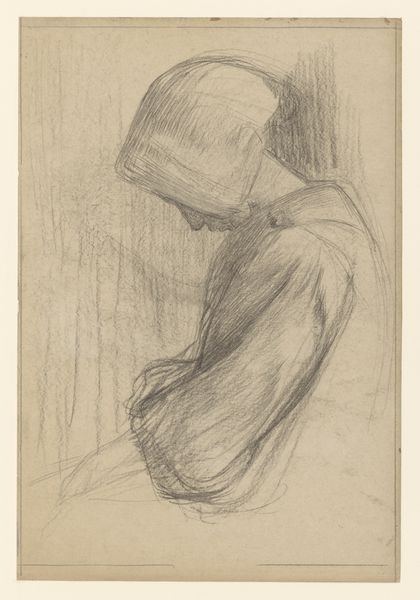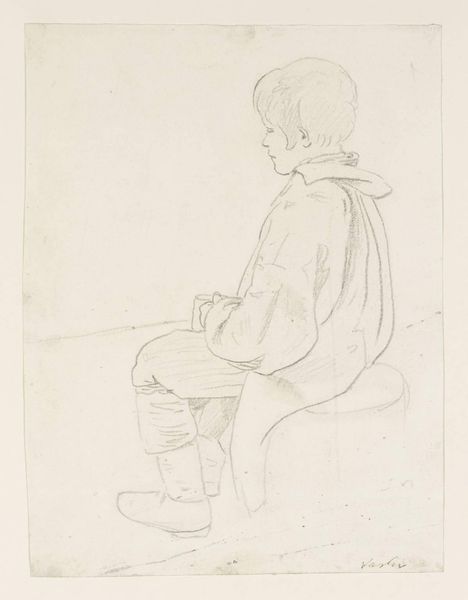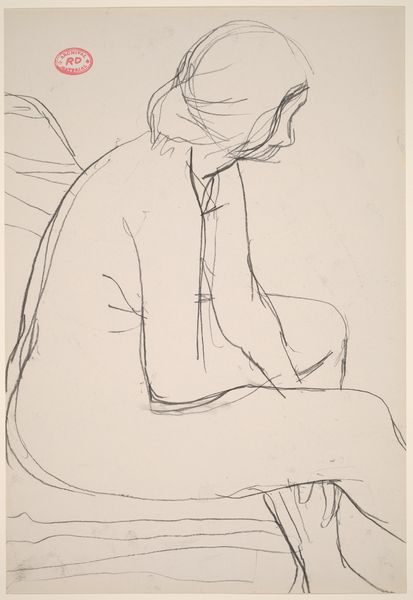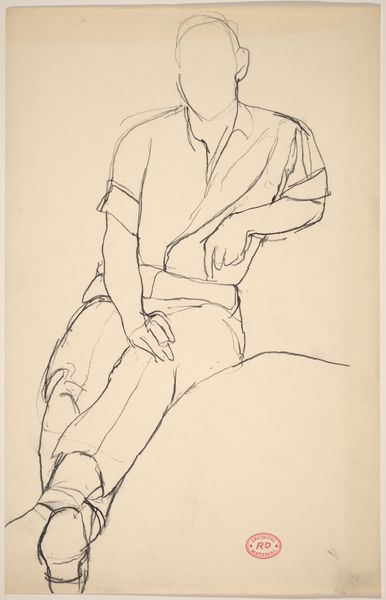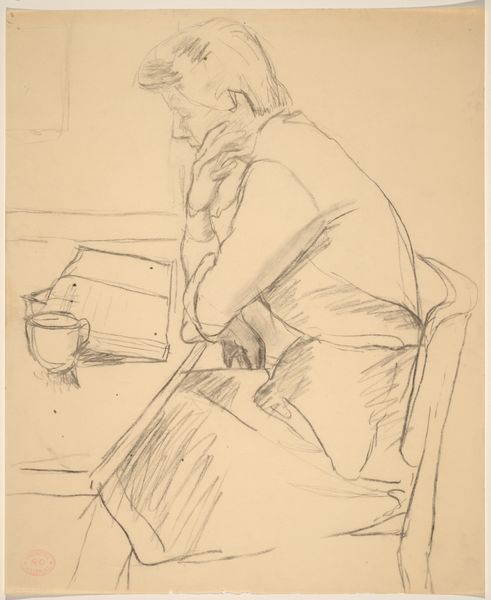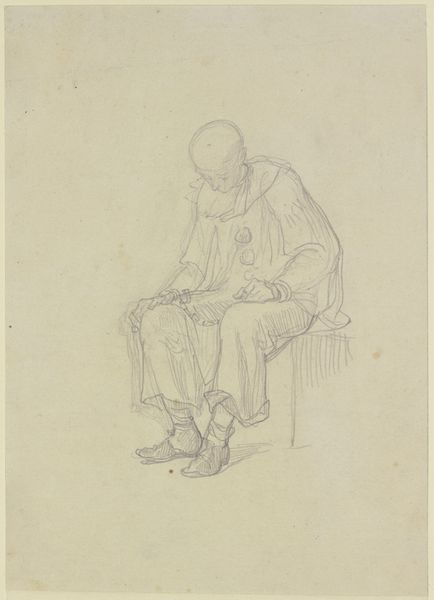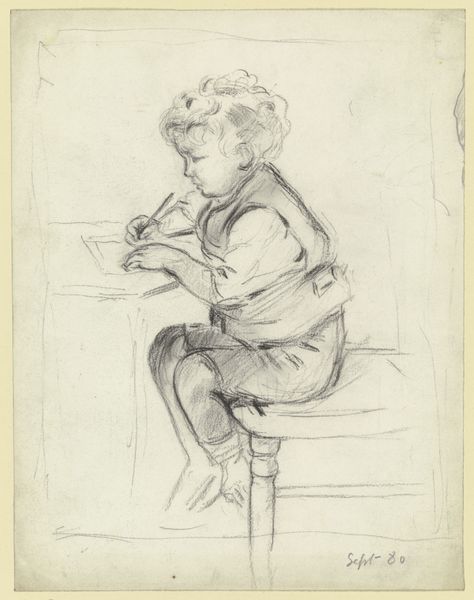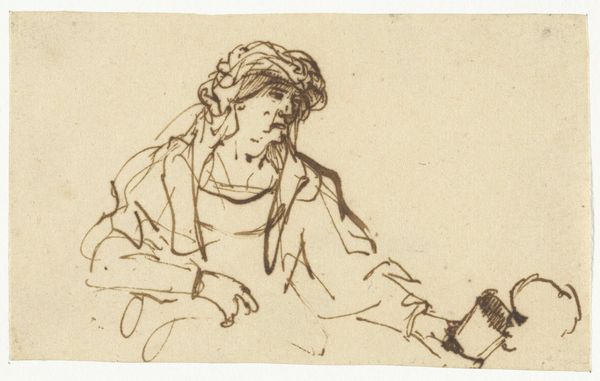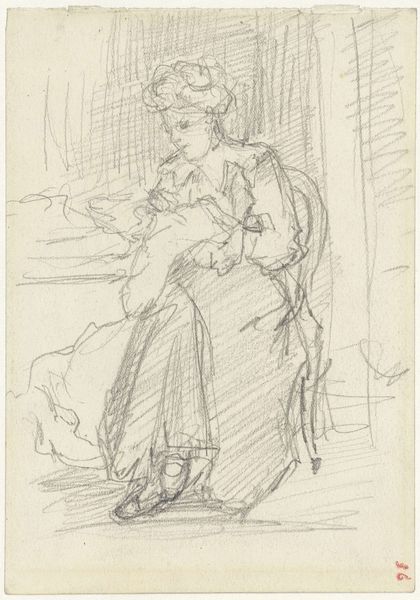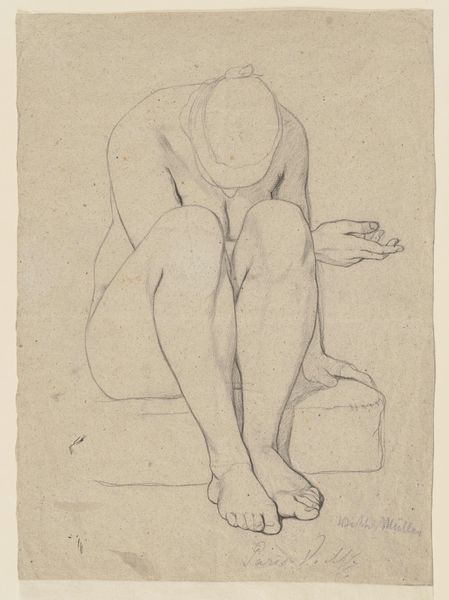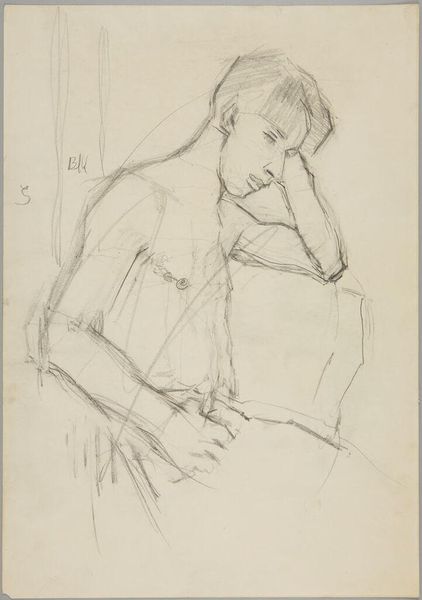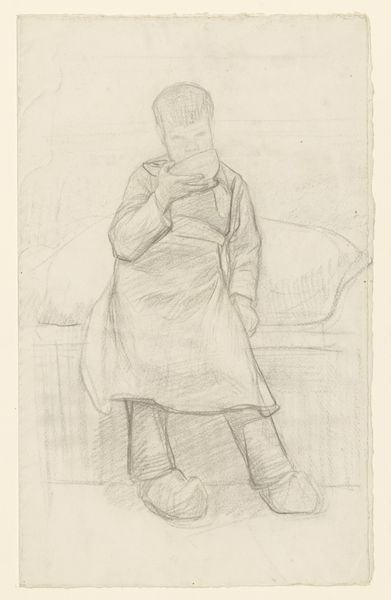
drawing, pencil
#
portrait
#
drawing
#
light pencil work
#
pencil sketch
#
cartoon sketch
#
figuration
#
personal sketchbook
#
ink drawing experimentation
#
pencil
#
line
#
sketchbook drawing
#
portrait drawing
#
pencil work
#
storyboard and sketchbook work
#
sketchbook art
Dimensions: height 315 mm, width 175 mm
Copyright: Rijks Museum: Open Domain
Editor: This is Jan Mankes' "Koemelkster," made between 1912 and 1914, and rendered in pencil. It's a simple drawing, but the subject's pose suggests a kind of quiet contemplation. What formal elements stand out to you in this piece? Curator: The most striking aspect is the linearity of the composition. Mankes employs line not just to delineate form, but as the primary structural element. Notice how the continuous, flowing lines create a sense of volume and define the figure's posture. It's the economy of means that I find most compelling. The almost absent shading focuses the attention on the precision and elegance of the contour lines. Editor: It's interesting that you call attention to the lines, as I was so drawn to the subject and her humble nature that I didn't think much about the artistic style itself. Does this work conform to the stylistic tenets of any particular movement, in your view? Curator: Not strictly, although it echoes certain Symbolist concerns with inner experience. It diverges from movements like Impressionism or Fauvism due to its limited color palette and controlled execution. However, we can draw links to other Symbolist portraits through the focus on subject as allegory for simplicity in country life, communicated using controlled tonal harmony and carefully crafted composition. What this generates is not an emotionally effusive engagement, but instead a stoic, serene moment. Editor: That makes a lot of sense, actually. Seeing how Mankes used a few lines to create depth while simultaneously flattening the image into a design is intriguing. Curator: Precisely! Mankes achieves a delicate balance between representation and abstraction through subtle modulations in line weight and the calculated placement of the figure within the pictorial space. Editor: I never really thought about portraiture in that way, viewing lines, rather than likeness or status, as the means to see the subject as a more nuanced design object. Thanks for the fresh look. Curator: It's a reminder of the expressive potential inherent in the fundamental elements of art, independent of cultural context.
Comments
No comments
Be the first to comment and join the conversation on the ultimate creative platform.
